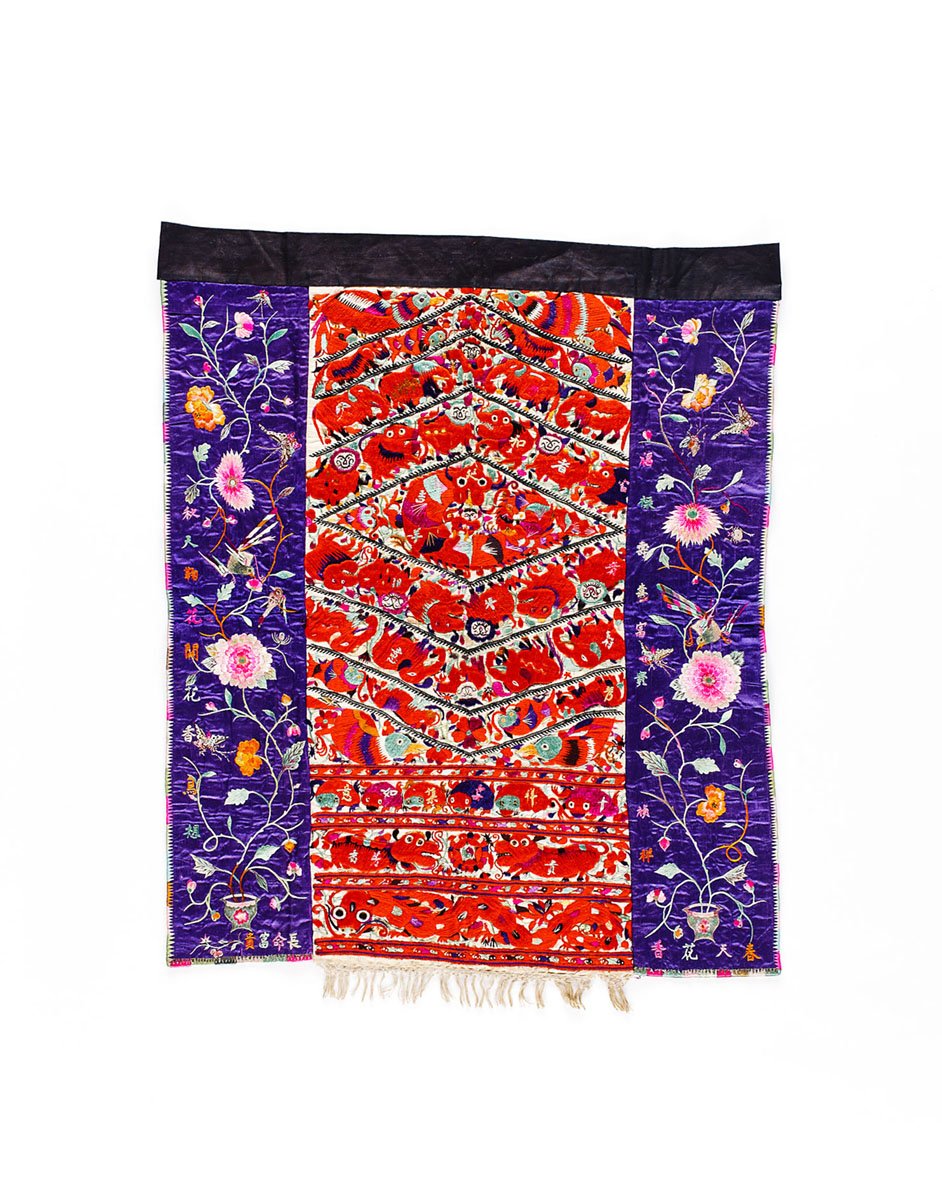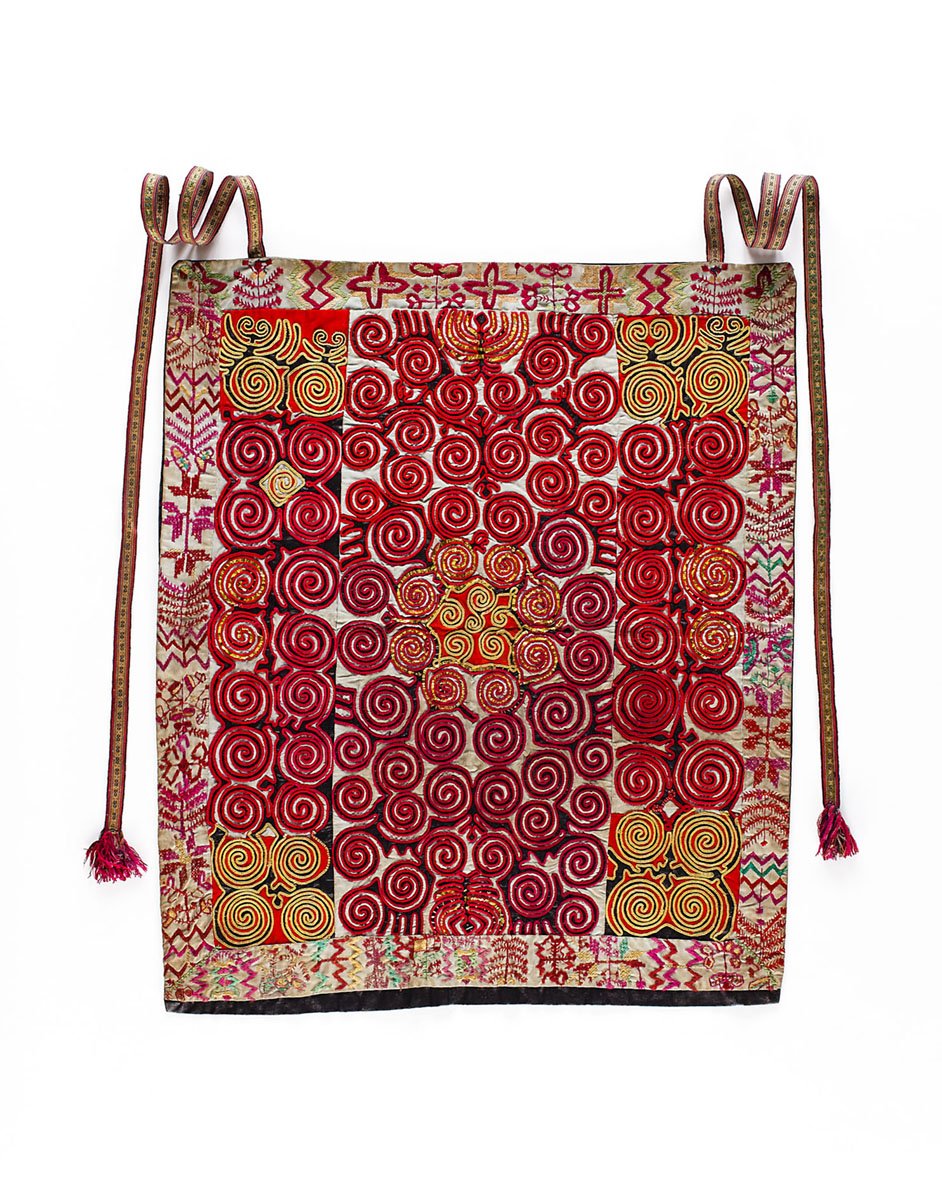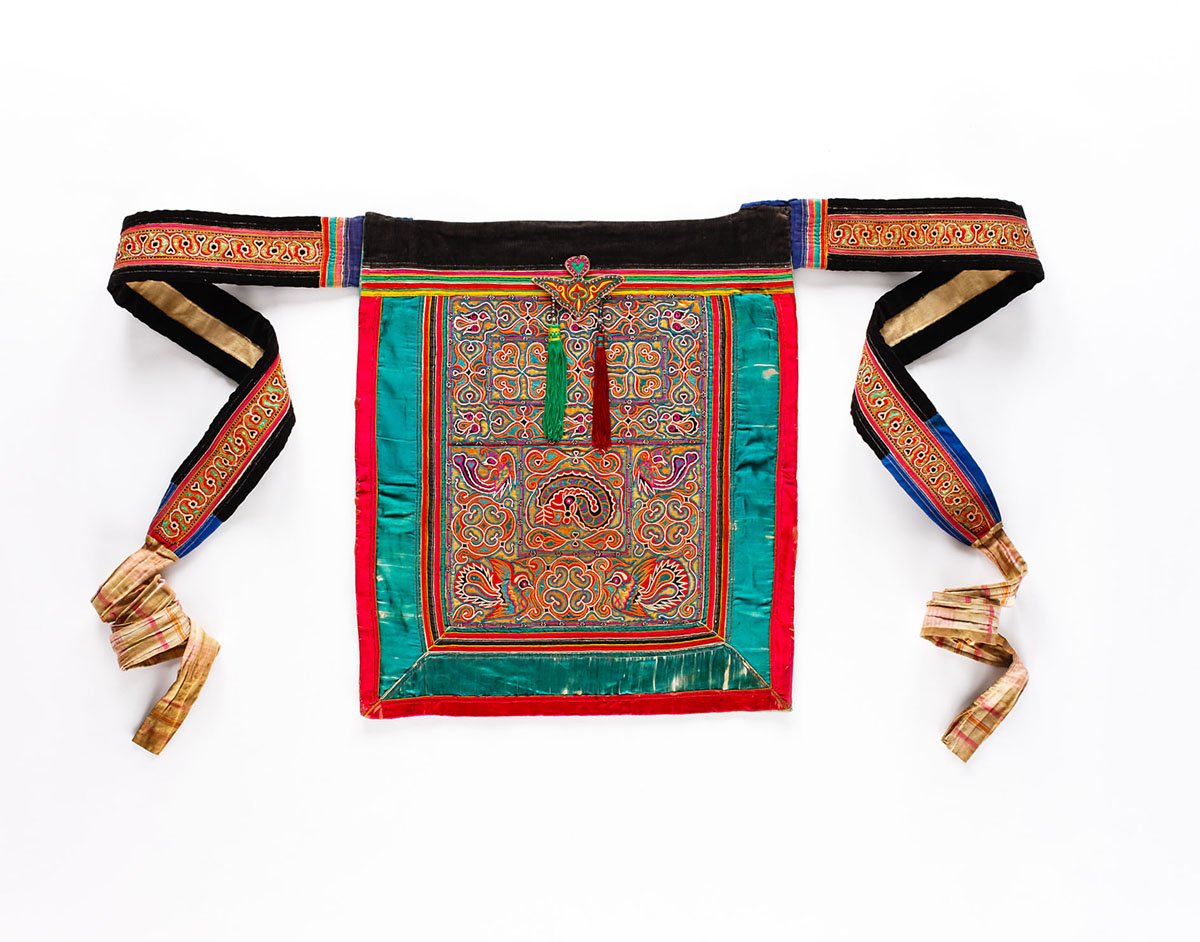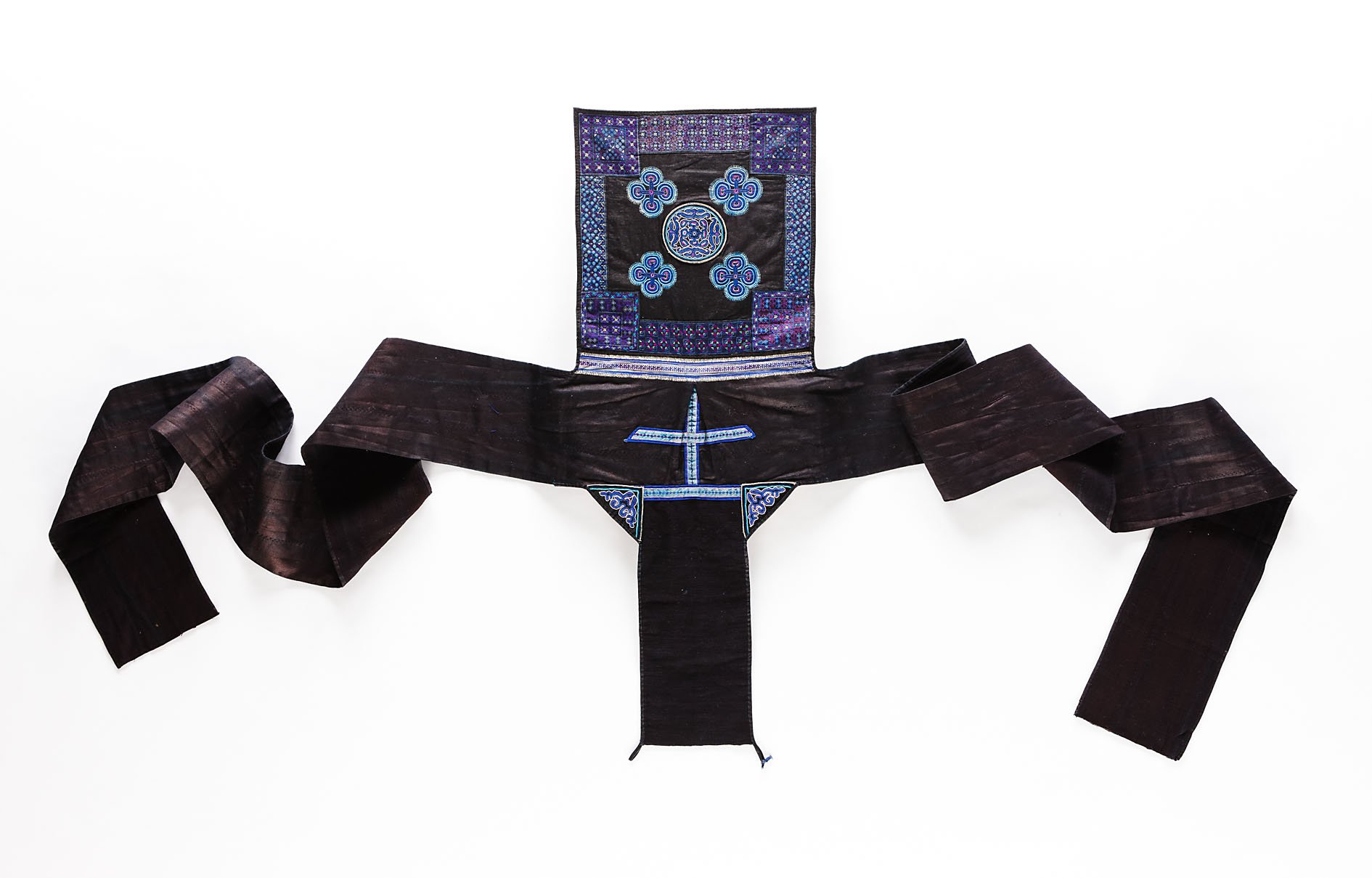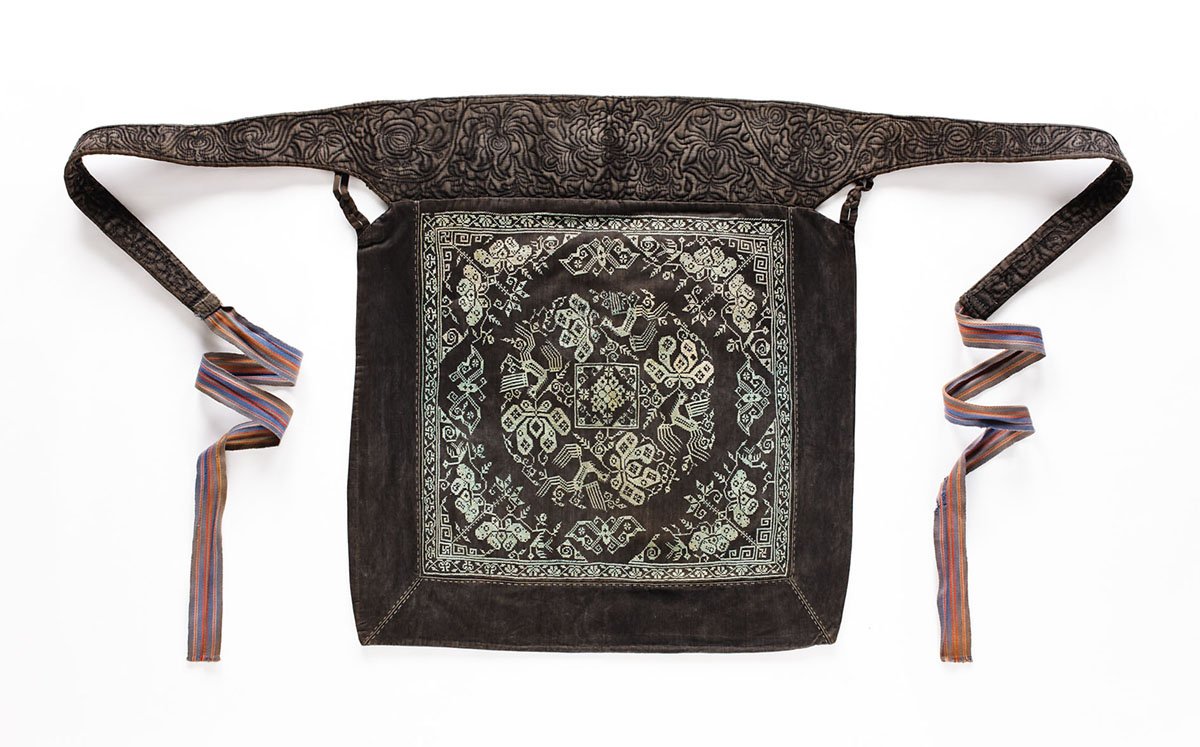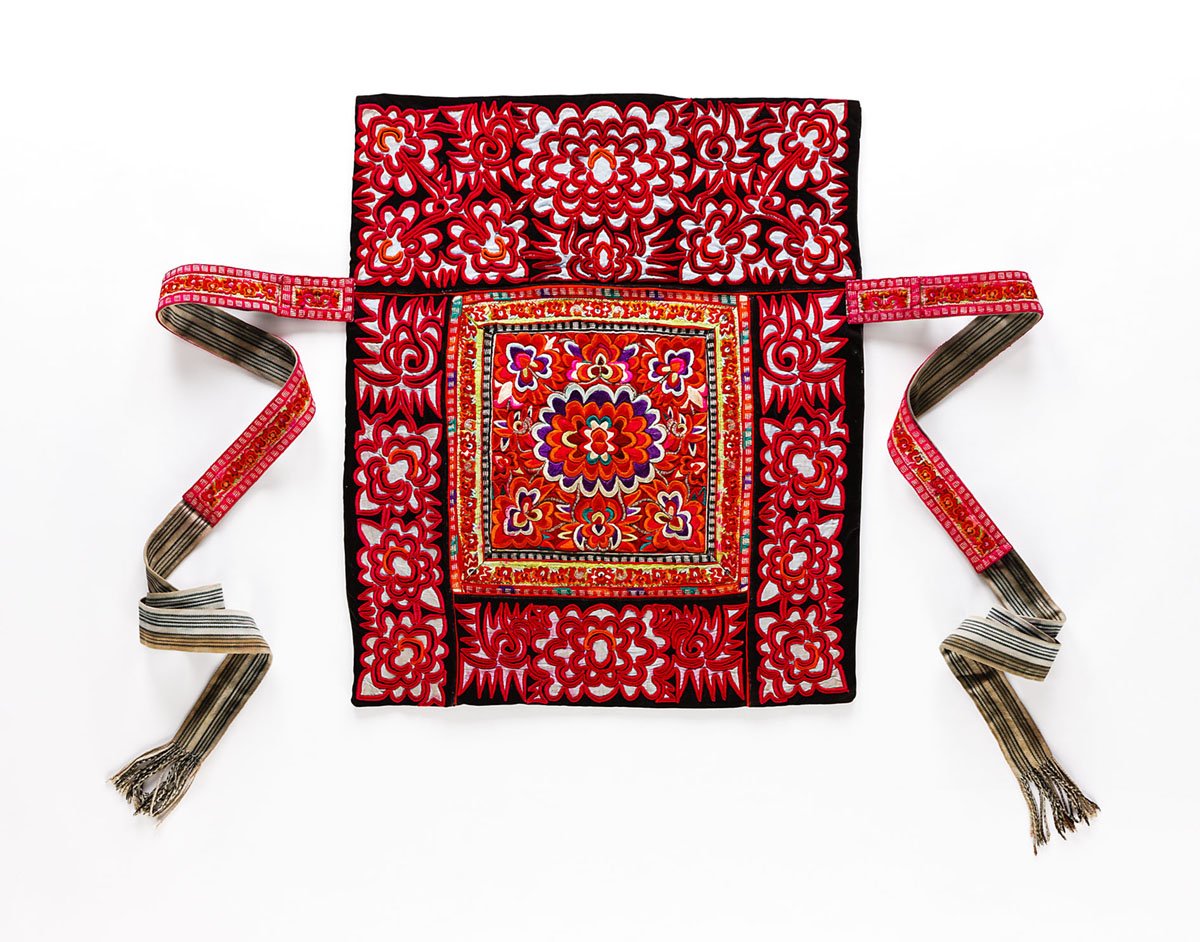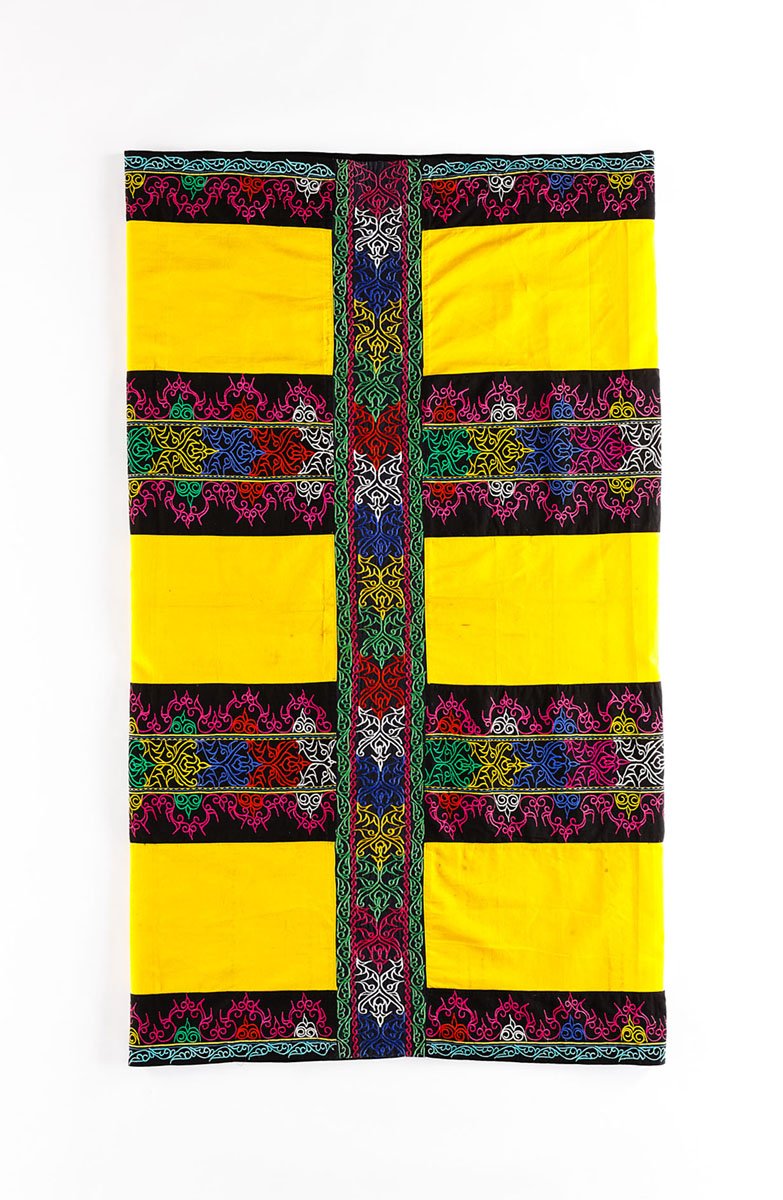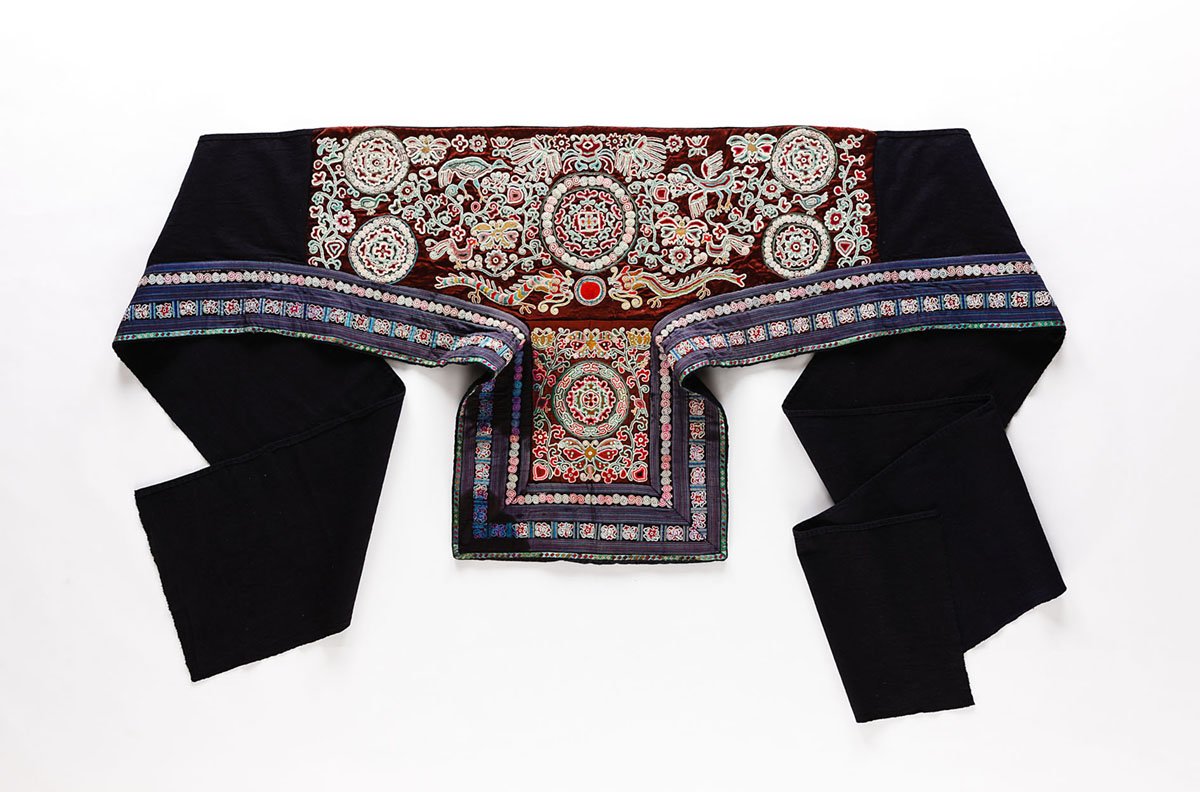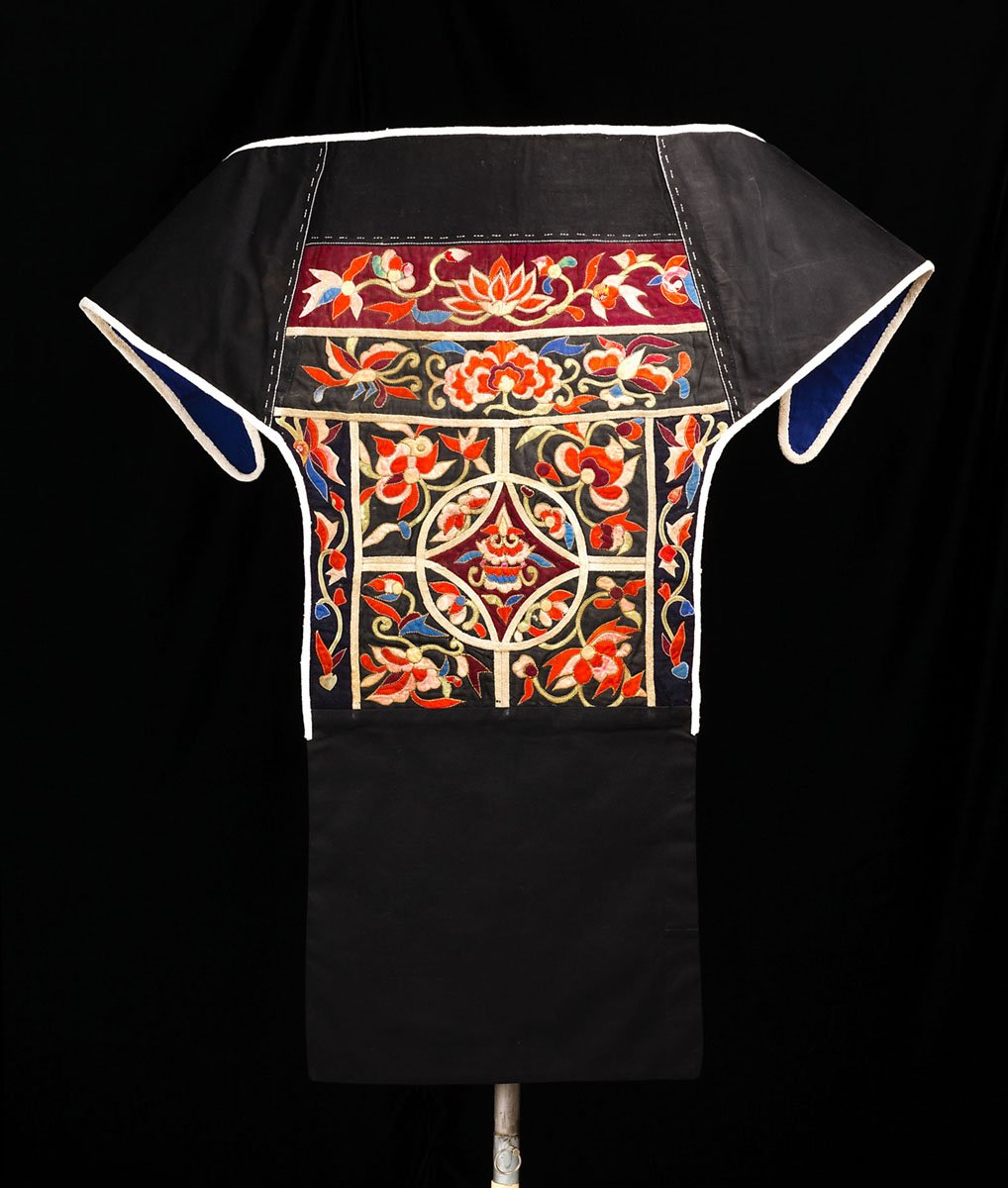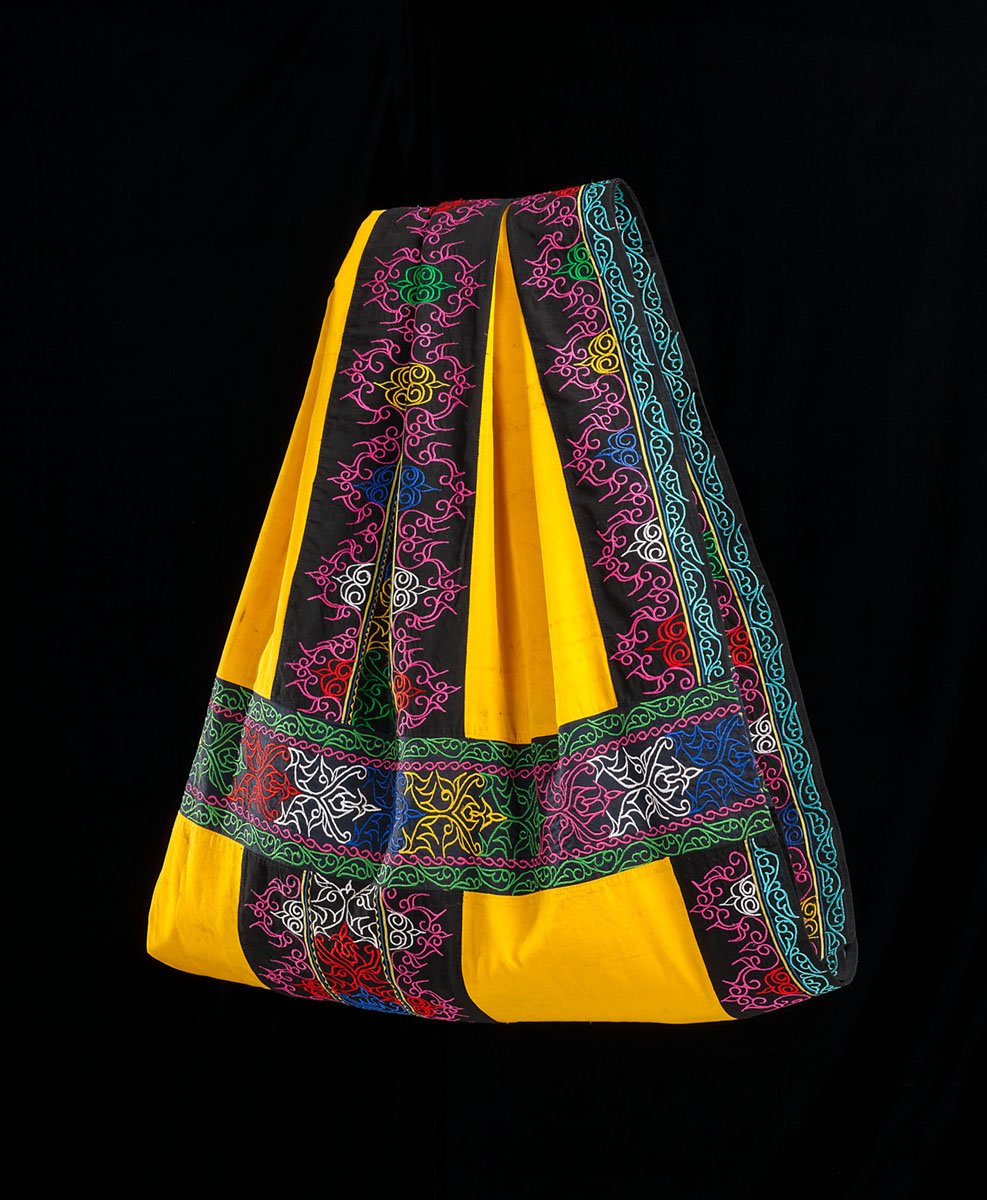It began with a ribbon
Stumbling upon a seemingly untethered ribbon, I discovered the most intimate love of the human heart.
Indeed, from birth until old age, every person carries the same ties that bind. From the moment life has been planted in the mother’s womb, mother and child are connected by this cord; the most unconditional love between heaven and earth is passed on generously to the child through this cord. The umbilical cord – this – is the tie between mother and child. After a child is born, a mother’s love transforms into another kind of connection that, though invisible, cannot be cut. And in the passage from one generation to the next, the life of this love is carried on boundlessly.
Likewise, it was also a ribbon (quite like the metaphorical ribbon of the umbilical cord), that later joined Ms. Lan together with the arts and crafts of the minority tribes in China.
Many years ago in a Chinese antique shop in Hong Kong, Ms. Lan happened upon a rectangular piece of exquisitely hand-embroidered and hand-dyed material. She was immediately drawn to the superiority of its needlework and tasteful color combinations. She could tell straight away that this was an extraordinary piece of artwork. After asking the shop owner some questions, she learned that this handicraft was a fragment from a baby carrier made by minority populations in China. But knowing this, she only became more confused. If the rectangular cloth she was holding was a baby carrier, then where were the strings that would secure the baby to its mother?
Why would someone take so much time and put so much care into the aesthetic design of a baby carrier, something that would wear away with frequent use, something that a baby would outgrow quickly? And then the shop owner continued to explain: Chinese minorities, especially the Miao and Dong tribes, care so much about designing their baby carriers because they feel that the carrier is a physical symbol of the tie between mother and child. Most mothers are reluctant to give up their carriers to buyers and collectors. Under circumstances where these women have to sell their handiwork, most insist on cutting off the carrier ties to keep for themselves. Fortunately, most collectors are only interested in the middle section of the carrier, like the rectangular cloths he held in that antique shop, and are willing to forgo the carrier ties that are often worn threadbare.
After hearing this moving explanation, Ms. Lan could not help but imagine that, in the complex, emotional world of mothers (with which she was familiar, as a mother of two), these baby carrier ties might be the replacement for the umbilical cords we cut when our babies are born. This idea had a profound impact on Ms. Lan and inspired the impetus to begin collecting baby carriers. So she went out into the markets and slowly began her collection of baby carriers. Every time she spread open a baby carrier, she was always in awe of the display of meticulous handicraft and she wondered what the creator of the carrier was feeling, what she was hoping and praying for her baby, when she patiently made each and every stitch. Under what kinds of circumstances and environment does she accomplish her project? To satisfy her curiosity, Ms. Lan journeyed to the southeastern area of Guizhou Province, where the largest Miao population resides. Her “baby carrier journey,” though difficult, proved wonderfully gratifying. It was not only a trip deep into the intricacies of Miao culture, but also a trip of self-discovery and understanding.
A cultural asset, a mother’s love
Of the plethora of folk art made by Chinese minorities, the most difficult to collect are baby carriers. According to some traditions, carriers that have been used have to be quietly taken back to a woman’s family before she was married, to be burned. Some women see the baby carriers as their children’s amulet. After their children are grown, mothers will wash clean the worn carriers, and keep them as they might a treasure or family heirloom.
This is the tradition of minority tribes in China, such as the Miao and Dong: When girls are eight or nine, they begin to learn the traditional techniques. Before these young women are married out of the family, they have to learn how to make the clothes that will dress them and their families for the rest of their lives. It is almost hard to believe that the young girls are responsible for learning how to perform every step of the process of making clothes, which includes picking cotton, extracting cotton from the cotton flower, looming yarn, starching yarn, raising silkworms, extracting silk threads from the cocoons, looming silk yarn, dyeing, and embroidery.
It is precisely because they see such a strong connection between weaving, embroidery, batik dyeing, love, and life, that young girls will dedicate all their energy into perfecting this particular technique and make baby carriers. By this time, her skills have already reached a certain level of superiority after years of practice and it is for this reason that baby carriers are arguably the most artfully and skillfully designed handicrafts. Furthermore, when a young woman makes a baby carrier, it is with a feeling of hopeful expectation and boundless love for her child-to-come that she designs this article of clothing. The baby carrier bespeaks the deep and complex emotions of a mother’s love.
Finding the traces of the ancestors of baby carriers
In fact, there are more than a hundred minority groups in China and among these groups, there are very complex sub-groups that keep their own languages, dialects, and customs. Still, one can see motifs repeatedly used in different subgroups, like the ru-yi cloud pattern, bronze drums, banyan tree’s flower, nine suns, coin symbol, and all kinds of geometric patterns. All these patterns are derived from observing natural phenomena and they are carried over from one generation to the next. Some of their origins cannot be explained or even remembered, but each one is the expression of these minority tribes’ innocence and fanciful imagination. They inspire an attraction that is so alluring that it is difficult for one not to fall in love with its ingenuity.
After hearing Ms. Lan describe her baby carrier story, her mother and daughter were both equally moved by the same impulses and emotions that moved her to collect baby carriers. Or perhaps it was because the three of them share a tie and understanding that spans three generations.
Ms. Lan firmly believes that besides the physical umbilical cord, there is one that an invisible tie, just as strong, that connects each and every one of us together. Though one can’t see this tie – or even hold it within one’s hands – its reach is far and wide and the emotions carried within, as deep as the ocean.


